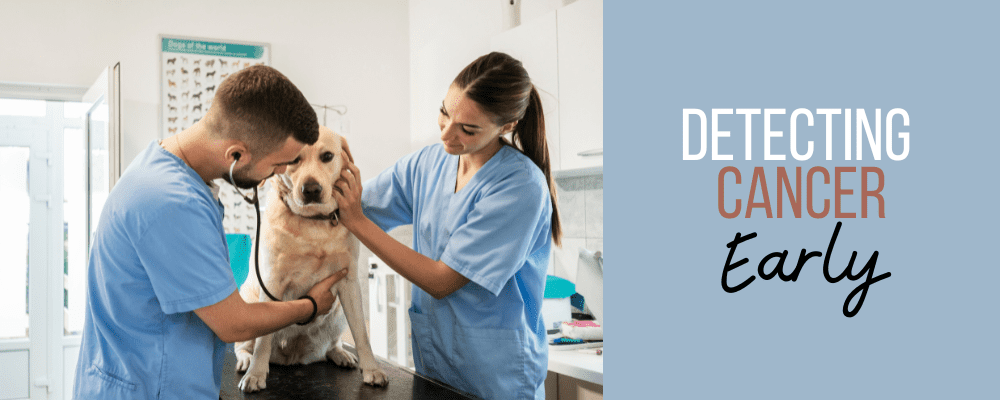Cancer affects approximately six million pets every year. This disease is caused by uncontrolled cell growth, and since there are many distinct types of cells in the body, there are many different types of cancer. The behavior of the cancer in the body, recommended treatments, and prognosis all depend on the type of cancer, so getting an exact diagnosis is vital to determine the next steps. Early detection and early action make a big difference in the success of cancer treatment. So what can pet owners do to help find a pet’s cancer?
MAINTAIN REGULAR VETERINARY APPOINTMENTS
An especially important part of early cancer detection in your pet is regular examinations with your family veterinarian. There are several parts of a veterinary exam that can reveal problems before a pet shows any symptoms at home, including lymph node and abdominal palpation, the unpleasant rectal exam in older intact male dogs, and a thorough oral exam. Annual exams are usually recommended for younger, healthy pets while older pets may need to be seen every six months or even more frequently if recommended by your family veterinarian.
APPROVE ROUTINE LABWORK
Lab work can also help detect cancer early and should be done regularly for all middle-aged and senior pets. Routine lab work for most pets may include:
- A complete blood count to measure the number of the different types of blood cells
- A serum chemistry panel to measure organ function and electrolytes
- Thyroid hormone levels
- Urinalysis to evaluate kidney function
While the results of these tests are unlikely to actually diagnose a specific type of cancer, they can tell your family veterinarian if there may be an internal problem brewing before your pet shows any symptoms. Based on any abnormalities in the results, your family veterinarian may recommend additional lab tests or imaging such as x-rays or ultrasounds. Those additional tests can then localize the problem and help determine if it is caused by a type of cancer.
APPROVE RECOMMENDED ROUTINE IMAGING
Imaging tests in humans are frequently done as screening tests for cancer (such as mammograms to screen for breast cancer). Similarly, imaging tests in animals such as chest x-rays and abdominal ultrasounds may help detect internal cancers before symptoms develop or abnormalities show up on lab work. Unfortunately, contrary to human medicine, there is no standard recommendation for how frequently these screening tests should be performed in an otherwise healthy pet. Often they are done as a secondary test if something abnormal is found on exam or in the lab work. For older pets or breeds at high-risk for cancer (such as Golden Retrievers, German Shepherds, Boxers, and Labrador Retrievers), annual or bi-annual imaging may be recommended.
HAVE ALL MASSES SAMPLED
Sometimes cancer can show up as a lump or bump that owners might notice at home – on a pet’s skin, in the mouth, or even on the toes. These masses can be benign or cancerous, but there’s only one way to know. Your family veterinarian must test them. While certain types of tumors may look similar, no veterinarian (not even a board-certified veterinary oncologist) can tell if a mass is cancerous just by feeling it. If you or your family veterinarian find any new masses on your pet, they should be sampled. This may be done with a fine needle aspirate or a biopsy. We will discuss this more in our next article.
If you have found a new or suspicious mass on your pet, give us a call so we can schedule an appointment to get it checked out.
